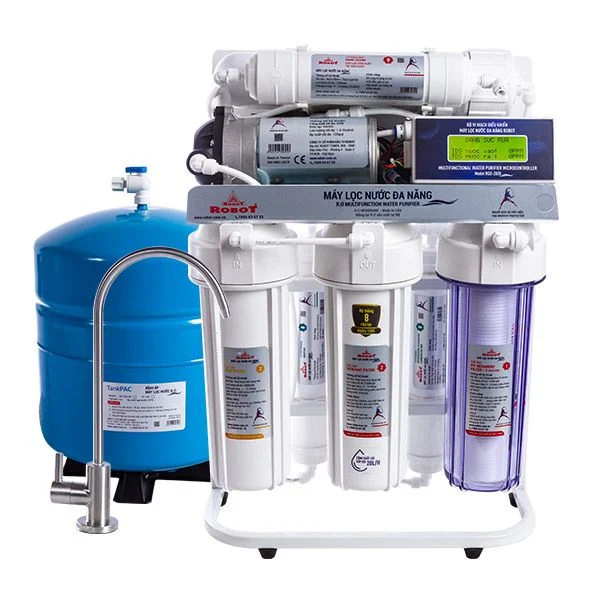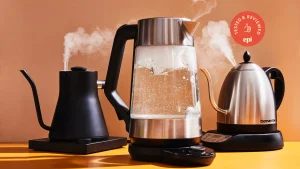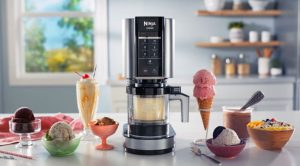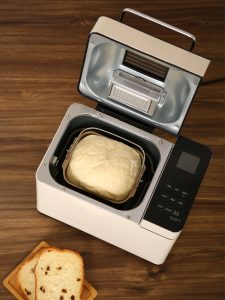Water Purifier: What Is It? How It Works, Its Applications, and Safe Usage Tips

A water purifier is an essential device for improving the quality of water by removing contaminants, ensuring that the water you drink and use for daily activities is clean and safe. With concerns over water pollution and health risks, using a water purifier has become increasingly popular in households, offices, and various industries. In this article, we will explore what a water purifier is, how it works, its real-world applications, and tips for safe usage.
1. What Is a Water Purifier?
A water purifier is a device designed to remove impurities from water, including harmful chemicals, bacteria, viruses, and other pollutants. It ensures that the water is safe for drinking, cooking, and other household purposes. Water purifiers can be standalone devices or part of an integrated water filtration system.
Common Types of Water Purifiers
- Reverse Osmosis (RO) Water Purifiers: These purifiers use a semipermeable membrane to remove contaminants like dissolved salts, bacteria, and heavy metals. RO systems are highly effective in providing purified water.
- UV Water Purifiers: UV purifiers use ultraviolet light to disinfect the water by killing harmful microorganisms like bacteria, viruses, and protozoa.
- Activated Carbon Filters: These purifiers use activated carbon to adsorb chemicals, chlorine, and volatile organic compounds (VOCs) from water, improving taste and odor.
- Ion Exchange Filters: These filters remove hard water minerals, such as calcium and magnesium, by replacing them with sodium or potassium ions.
- Distillation Water Purifiers: These purifiers boil water to produce steam, which is then condensed back into water, leaving impurities behind.
Benefits of Using a Water Purifier
- Improved Water Quality: Water purifiers remove harmful contaminants, ensuring cleaner and healthier water.
- Better Taste and Odor: Many purifiers enhance the taste and smell of the water by removing chlorine and other chemicals.
- Health Protection: Purifying water reduces the risk of waterborne diseases and chemical exposure, making it safer to consume.
- Convenience: Water purifiers offer a consistent and convenient supply of clean water, reducing the need for bottled water.
2. How Does a Water Purifier Work?
The working principle of a water purifier depends on the type of technology it uses. Here are the key mechanisms behind common water purifiers:
The Main Components of a Water Purifier
- Filter or Membrane: The core component of most purifiers, whether it’s an activated carbon filter, reverse osmosis membrane, or ion exchange resin. These components physically or chemically trap contaminants.
- Pre-Filter: Some systems include a pre-filter to remove larger particles, such as sand and sediment, before the water goes through the main filtration process.
- UV Light (for UV purifiers): In UV purifiers, the UV lamp emits ultraviolet light that disrupts the DNA of bacteria and viruses, rendering them harmless.
- Water Tank or Storage System: Many water purifiers come with a tank to store purified water, ensuring a constant supply for daily use.
The Principle of Operation
- Reverse Osmosis (RO): Water is forced through a semipermeable membrane that blocks contaminants while allowing purified water to pass through.
- UV Purification: Water flows through a chamber where it is exposed to UV light. The UV light kills bacteria, viruses, and other pathogens in the water.
- Activated Carbon Filtration: The water passes through a carbon filter, which adsorbs chemicals, chlorine, and other impurities, improving taste and removing odors.
- Ion Exchange: Hard water is treated by exchanging calcium and magnesium ions with sodium or potassium ions, reducing hardness and preventing scale buildup.
- Distillation: Water is boiled, and the resulting steam is collected and condensed back into liquid water, leaving contaminants behind.
3. Applications of Water Purifiers
Water purifiers are used in various settings, from homes to industries, to ensure safe and clean water for different purposes. Here are some common applications:
Household Use
- Drinking Water: The primary use of water purifiers is to provide clean and safe drinking water, free from harmful contaminants.
- Cooking and Food Preparation: Clean water is essential for cooking and food preparation, and water purifiers ensure that the water used in these activities is free from toxins.
- Bathing and Skin Care: Using purified water for bathing or washing your face can help avoid skin irritation caused by chlorine and other chemicals found in untreated water.
Commercial and Industrial Use
- Restaurants and Cafes: Many restaurants use water purifiers to ensure that water used in food preparation and beverages, such as coffee or tea, is free from impurities.
- Manufacturing and Pharmaceutical Industries: Industries that require pure water for manufacturing processes, such as in pharmaceuticals, electronics, and cosmetics, rely on advanced filtration systems like RO or deionization systems.
- Aquariums and Agriculture: Purified water is essential for maintaining healthy environments in aquariums and hydroponic farming.
Outdoor and Travel Use
- Camping and Hiking: Portable water purifiers, such as UV pens or small filtration systems, are commonly used by campers and hikers to purify natural water sources for safe drinking.
- Travel: Water purifiers can be essential for travelers visiting regions with questionable water quality, ensuring that they can safely drink water during their trip.
4. How to Use a Water Purifier Safely
While water purifiers are designed to provide clean water, it’s important to use them correctly to ensure maximum efficiency and safety. Here are some essential tips for safe use:
Installation and Setup
- Follow Manufacturer Instructions: Always follow the installation instructions provided by the manufacturer to ensure the system works properly. Incorrect installation may reduce the purifier’s effectiveness.
- Positioning the Purifier: Install the purifier in a clean, dry area that is easily accessible for maintenance and filter replacement.
Regular Maintenance
- Change Filters Regularly: Most water purifiers require periodic filter changes. Follow the manufacturer’s recommendations regarding the lifespan of the filters and replace them as needed to maintain optimal performance.
- Clean the System: Regularly clean the purifier, including the tank and the filter housing, to prevent mold and bacteria buildup. Follow the manufacturer’s guidelines for cleaning.
- Check for Leaks: Periodically inspect the purifier for leaks or damage, and address any issues immediately to avoid water wastage or contamination.
Using the Purified Water
- Store Properly: If your purifier has a storage tank, make sure to cover the tank properly and avoid leaving purified water standing for long periods. Stagnant water can become contaminated.
- Avoid Using Contaminated Source Water: While water purifiers are designed to handle most contaminants, they may not work well with highly contaminated or polluted water. If the source water is heavily contaminated, consider pre-filtering or treating it before using the purifier.
Safety Precautions
- Keep Out of Reach of Children: Ensure that the purifier and its components are safely stored away from children to avoid any potential risks.
- Turn Off When Not in Use: If you have an electric-powered purifier, make sure to turn it off when not in use to conserve energy and prolong the lifespan of the device.
Conclusion
A water purifier is an essential tool for ensuring access to clean, safe drinking water and improving overall water quality. By understanding how water purifiers work, their applications, and following safe usage practices, you can enjoy purified water with confidence. Regular maintenance and proper use of the purifier will help ensure that it performs effectively and provides you with clean water for all your daily needs. Whether you are using it at home, in a commercial setting, or on an outdoor adventure, a water purifier is a valuable investment for your health and well-being.







